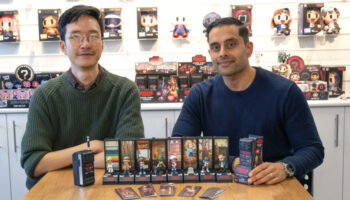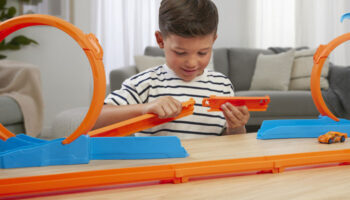littleBits’ Krystal Persaud on why play is key in getting kids invested in inventing

Based in New York City, tech firm littleBits is now six years into its mission to empower kids to be creators and inventors with technology, and not just consumers of it.
Known for its range of tech kits, each boasting electronic building blocks that are colour-coded, magnetic, and aim to make complex technology simple and fun, the firm has enabled kids to invent anything from a sibling alarm to a wireless robot.
Last year saw the firm reach new heights when it teamed with Disney to launch its Star Wars Droid Inventor Kit, which went on to be named Creative Toy of the Year at this year’s TOTY Awards.
We caught up with littleBits’ senior director of product design and strategy, Krystal Persaud, to find out more about the development process behind the company’s kits, what it was like to work on a Star Wars product and why play is such an effective tool for getting kids invested in inventing.
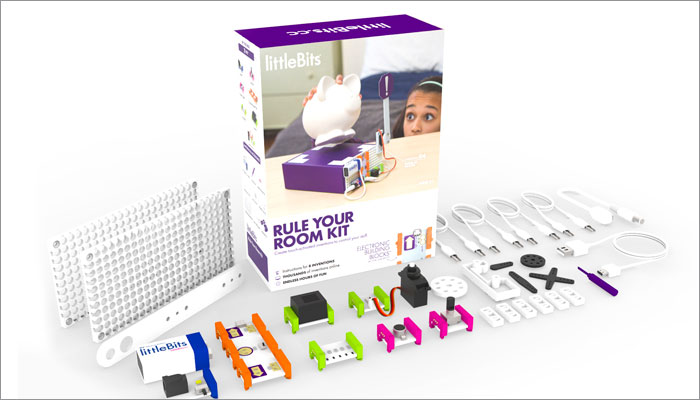
First off, can you tell us a bit about your own history in the world of design?
I started my career as an industrial design intern at littleBits after graduating from the Georgia Tech School of Industrial Design. I heard about littleBits back in 2011 and immediately thought, “Oh my God, I have to work there!”
After graduating, I was feeling disenchanted with finding a job in industrial design because I didn’t want to design housewares, furniture, or work at consultancies like IDEO. I wanted to do something in education and thought that modularity and education were truly the future of the design. littleBits is an electronics company that empowers kids to be inventors!
I’m committed to developing products that fall in the intersection of education, technology, and society, and I lead littleBits’ product design team to deliver new kits and to make sure our Bits are fun, beautiful, and usable. Most importantly, I make sure we are delivering the most transformative, intuitive, and empowering experience possible.
Outside of littleBits, I am the founder and managing member of the design collective GROUPHUG, which addresses the overwhelming problems that society faces. I also teach a course on product development processes and materials at the New Jersey Institute of Technology.
How would you sum up the creative culture at littleBits?
littleBits is a tech company that creates both toy products and education products. By definition, we are a geeky bunch who tries not to take ourselves too seriously. We do workshops, we go visit schools when we can, and we invite kids to do user testing weekly – this helps us to keep in touch with our users and how they’re using the product. And it helps us keep in touch with our inner eight year olds.
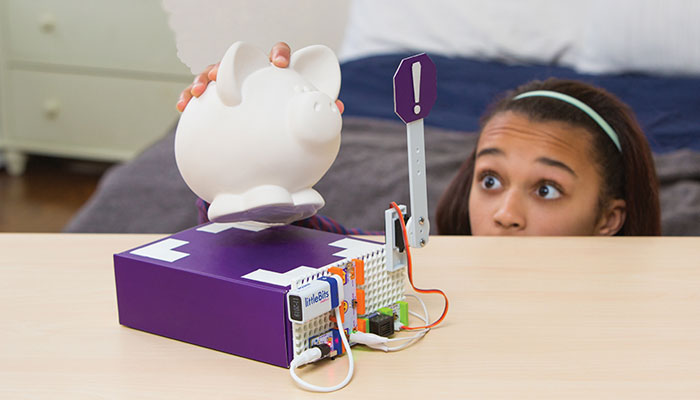
Can you talk us through your usual development process at littleBits?
Once we have an initial product idea, the product design team starts digging into it! We start off by brainstorming ideas internally within the company, playing with competitive products in the space, and talking to a lot of kids, parents, and teachers.
Then, once we have some invention ideas, we start prototyping: cardboard, tape, scissors, and littleBits. I’m a big believer in prototyping fast and early in the development process so you can start user testing as soon as possible.
We have a weekly littleBits Lab where kids come into the office to try out new products in development. Then once we have their feedback, we keep iterating and improving the instructions and the design. It’s a very cross-functional process that involves hardware engineering, software engineering, software design, marketing, operations and manufacturing, and product management.
Most important in our design process is to ensure that our team is having fun. Play is important for both kids and adults; in fact, the mind at play is more open, relaxed, and productive. If the design team is having fun while making the product, these feelings are translated through the design to the user of the final product.
What makes play such an effective tool for getting kids invested in inventing?
By the tender age of two, many kids are already adept at manipulating iPads, talking to Alexa, and using other IoT devices. But their relationship with technology tends to be pretty one-sided… it is all about consumption.
At littleBits, we believe that kids should have an active relationship with technology, but we know that kids are still kids at heart. They thrive in play; they should be on the floor assembling parts and pieces, making things, touching things, being creative, problem solving. We use bits of technology like sensors, Bluetooth, and programmable bricks to enhance their imagination – making it easy for them to create, manipulate, and invent as active participants in technology.
We get a lot of fan letters from parents and kids that say they never knew they were creative or they never knew they were good at technology. We hear a lot of teachers say that kids who are doing the worst in class are the ones who are the most engaged with littleBits. Learning through play is a very effective technique for kids that are much more savvy but still have the same need to play and learn.
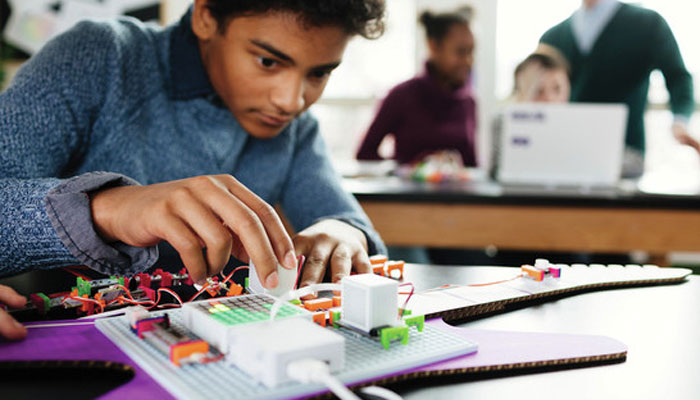
What do you make of the state of creativity in the wider STEAM toy sector at present?
More STEAM toys are coming out everyday, so the concept is not as foreign as it once was. However, many of these toys are still missing the ‘fun’ element. The motivation to learn has to come from the kid; it can’t be forced upon her.
Can you talk us through the development process behind the Droid Inventor Kit? How did the collaboration with Disney change your usual design approach?
First, I’m a huge lifelong Star Wars fan. I have been Darth Vader for the past five Halloweens: my costume is interactive and made of littleBits! It was a dream to work on the collaboration.
Star Wars inspires its fans in different ways – tinkering, scavenging, and invention are all themes in the franchise. And to a large extent, the success of the littleBits Droid Inventor Kit is rooted in its mission alignment with Disney: inclusion and diversity of the kids and parents who play with the product, the emphasis on gender and multicultural diversity in the latest Star Wars movies, and a commitment to STEAM education.
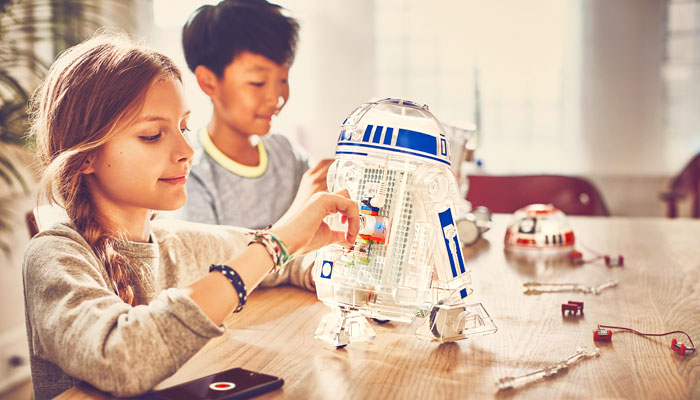
The littleBits Droid Inventor Kit is about the building and making of inventions that promote STEAM through iterative education. And investing in our relationship with Disney has paid off. For the first time ever, they’ve allowed a licensee to ‘go off book’ and create a character-based toy that can be customised. From the core product to the pictures on the box, they embraced the value that littleBits brings to their portfolio of licensed products and how it will impact their own customer relationships and long-term value.
Iteration is in the littleBits DNA: invention, ideation, failure, discovery, collaboration, and reinvention. The iterative process helped littleBits to socialise its product development process and mission to more executives throughout the Disney family, resulting in a broader set of advocates and talent engaged with the product and mission.
How do you stay creative?
I draw constantly. When I’m on the couch watching Netflix, in a meeting, or on the subway commuting to work – I am always sketching. Whether it’s a weird three-eyed monster or a new product idea, I always have my sketchbook with me. Outside of working at littleBits, I also manage a small design collective called GROUPHUG that puts on a design show during NYC Design week every year. I also really enjoy working on WILDGRID, fun sustainability/energy experiments with my friend and former co-worker Hirumi Nanayakkara.









